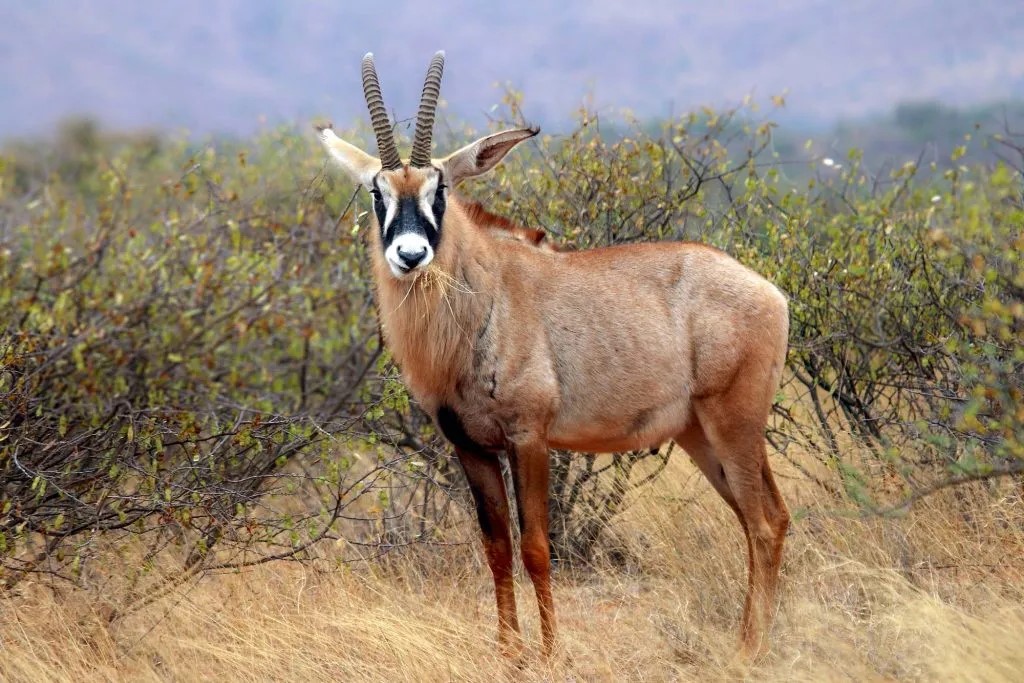The Majestic Roan Antelopes of Uganda: A Closer Look at an Iconic Species
The Roan Antelope (Hippotragus equinus). Uganda, often referred to as the “Pearl of Africa,” boasts a rich tapestry of biodiversity, and among its charismatic wildlife, the Roan Antelope (Hippotragus equinus) stands out as a majestic and iconic species; In this article we are going to explore the unique characteristics, habitat, behavior, conservation status, and the significance of Roan Antelopes in the context of Uganda’s natural heritage.
Description and Physical Characteristics:
Roan Antelopes are one of the largest and most striking antelope species, characterized by their distinctive reddish-brown to chestnut-colored coat, contrasting white facial markings, and long, sweeping horns; Adult males, known as bulls, typically have longer and more robust horns, which can reach lengths of up to 40 inches (1 meter), curving slightly backward. Adult females, or cows, are generally smaller and lack horns.
Habitat and Distribution: – The Roan Antelope (Hippotragus equinus)
Roan Antelopes prefer a variety of habitats, including savannas, woodlands, and grasslands. In Uganda, they are primarily found in the northern and northeastern regions, inhabiting places such as Murchison Falls National Park, Kidepo Valley National Park, and Pian Upe Wildlife Reserve. The open grassy plains and acacia woodlands of these areas provide an ideal environment for Roan Antelopes to thrive.
Behavior and Social Structure:
Roan Antelopes are known for their social behavior, often forming small groups called herds. These herds typically consist of females and their offspring, while males may either be solitary or form smaller bachelor groups. The dominant male, or bull, establishes and defends territories, engaging in impressive displays to assert dominance and attract mates. These displays may involve vigorous head movements, pawing the ground, and emitting deep grunting sounds.
Diet and Feeding Habits:
As herbivores, Roan Antelopes graze on a variety of grasses and browse on leaves, fruits, and shrubs. Their diet is adapted to the seasonal availability of vegetation in their habitat. Water is a crucial component of their diet, and they are often found near water sources, particularly during the dry season.
Conservation Status: – The Roan Antelope (Hippotragus equinus)
While Roan Antelopes are not currently classified as globally threatened, their populations have faced declines in some regions due to habitat loss, hunting, and competition with domestic livestock. In Uganda, concerted conservation efforts, including habitat protection and anti-poaching measures, have been implemented to safeguard their populations.
The Importance of Roan Antelopes in Uganda:
Roan Antelopes play a vital role in maintaining the ecological balance of their habitats. As herbivores, they influence vegetation structure through grazing and browsing, which, in turn, affects the composition of plant species and supports biodiversit; Moreover, these majestic antelopes contribute to the aesthetic appeal of Uganda’s national parks, attracting ecotourists and nature enthusiasts from around the world.
Remarks: – The Roan Antelope (Hippotragus equinus)
The Roan Antelopes of Uganda symbolize the country’s commitment to preserving its natural heritage. Their iconic presence in the diverse ecosystems of Uganda’s national parks reflects the delicate balance between conservation and sustainable development. As guardians of these remarkable creatures, Uganda stands at the forefront of wildlife conservation, ensuring that future generations can continue to marvel at the beauty and grace of the Roan Antelope.








